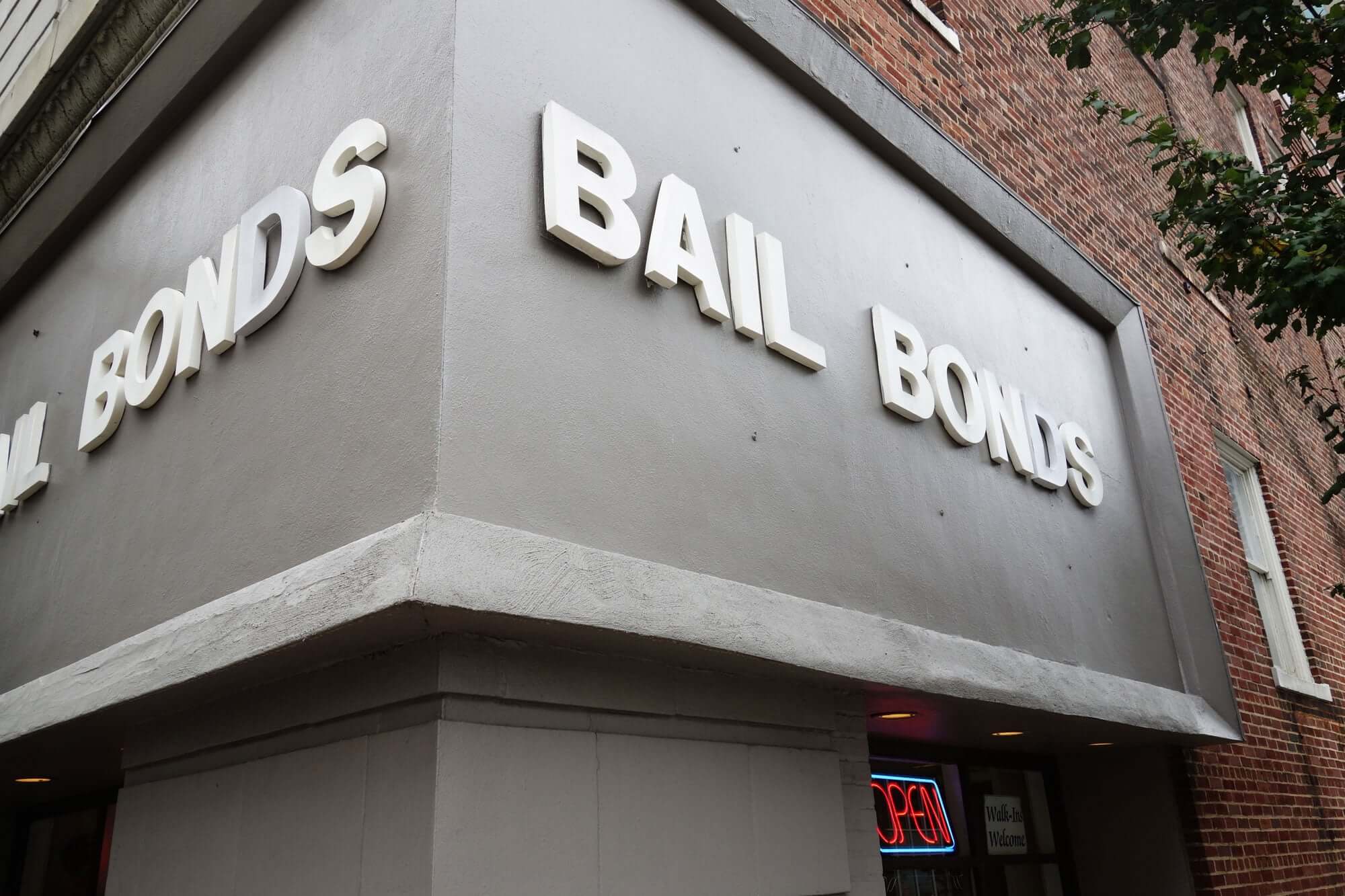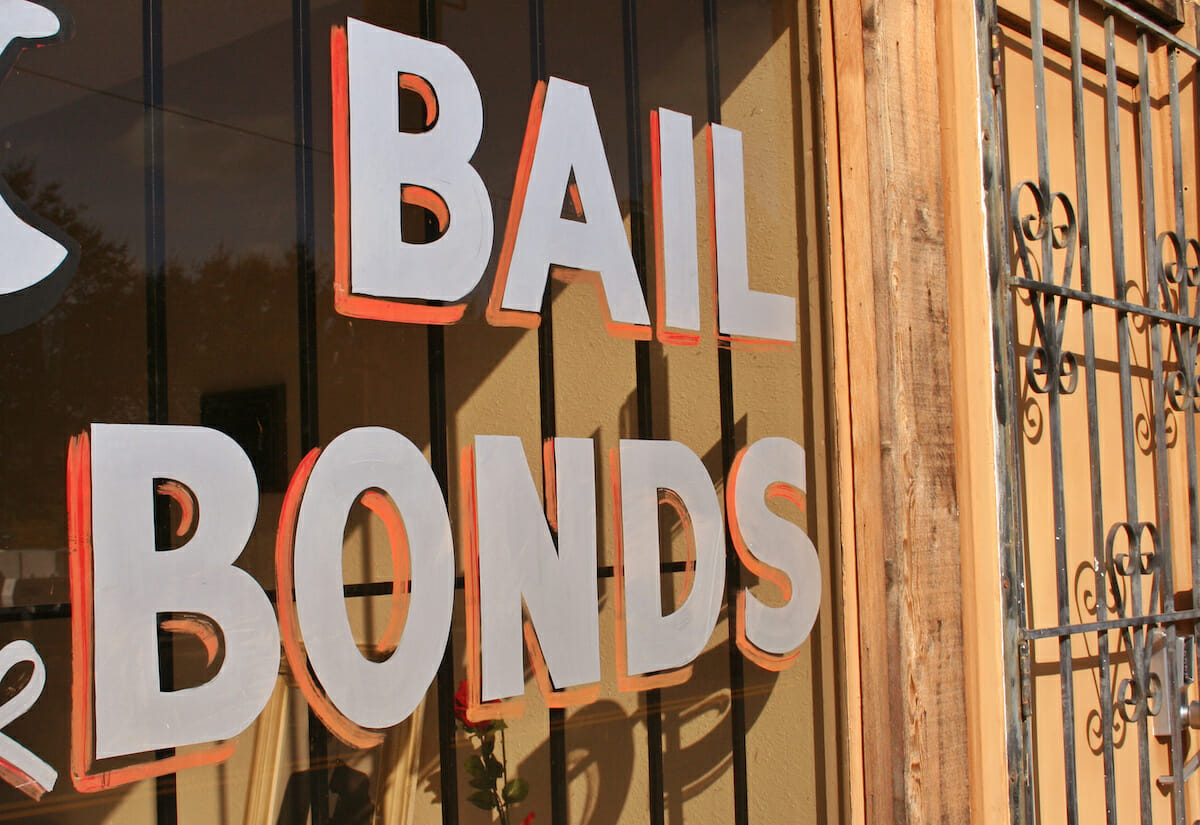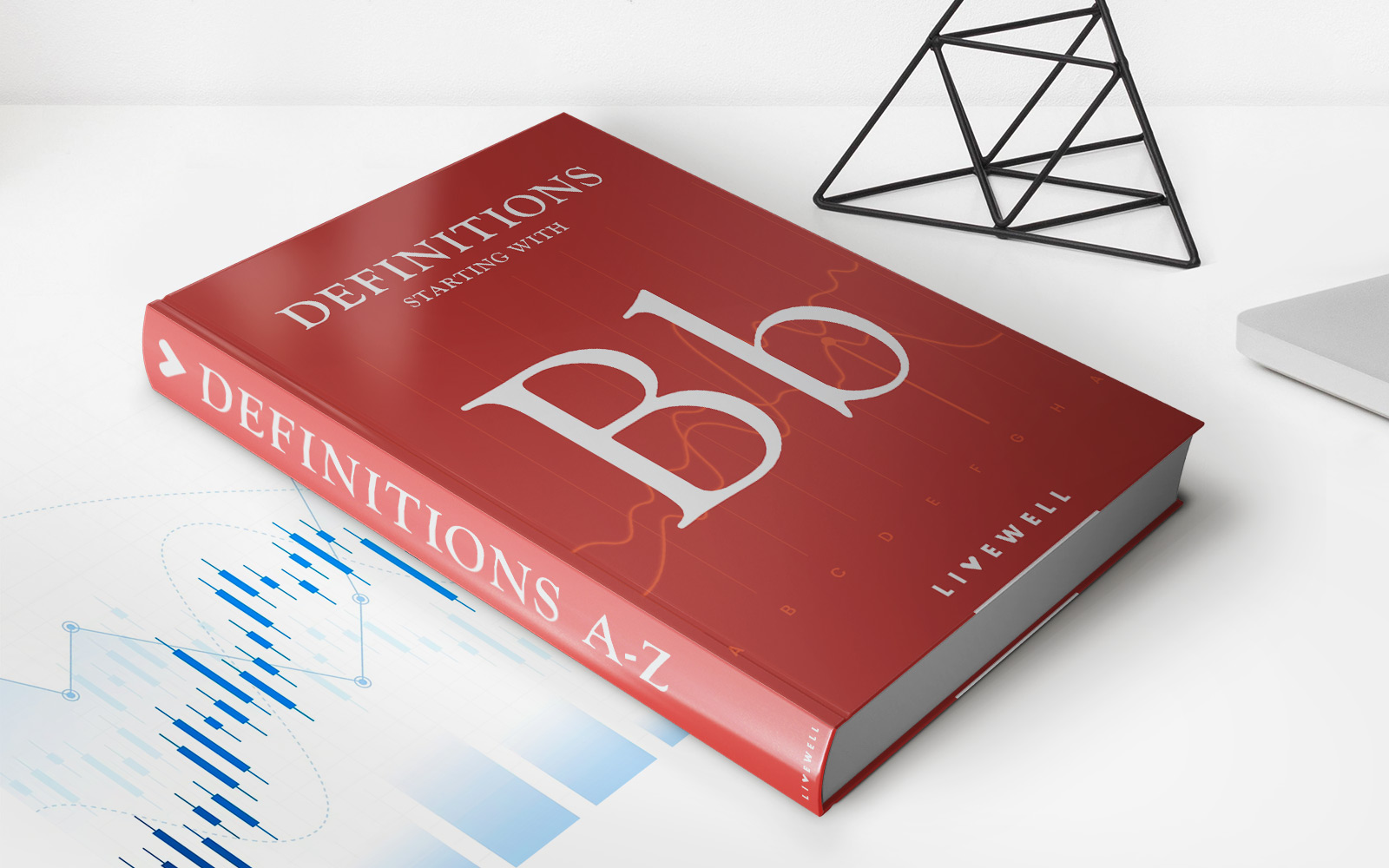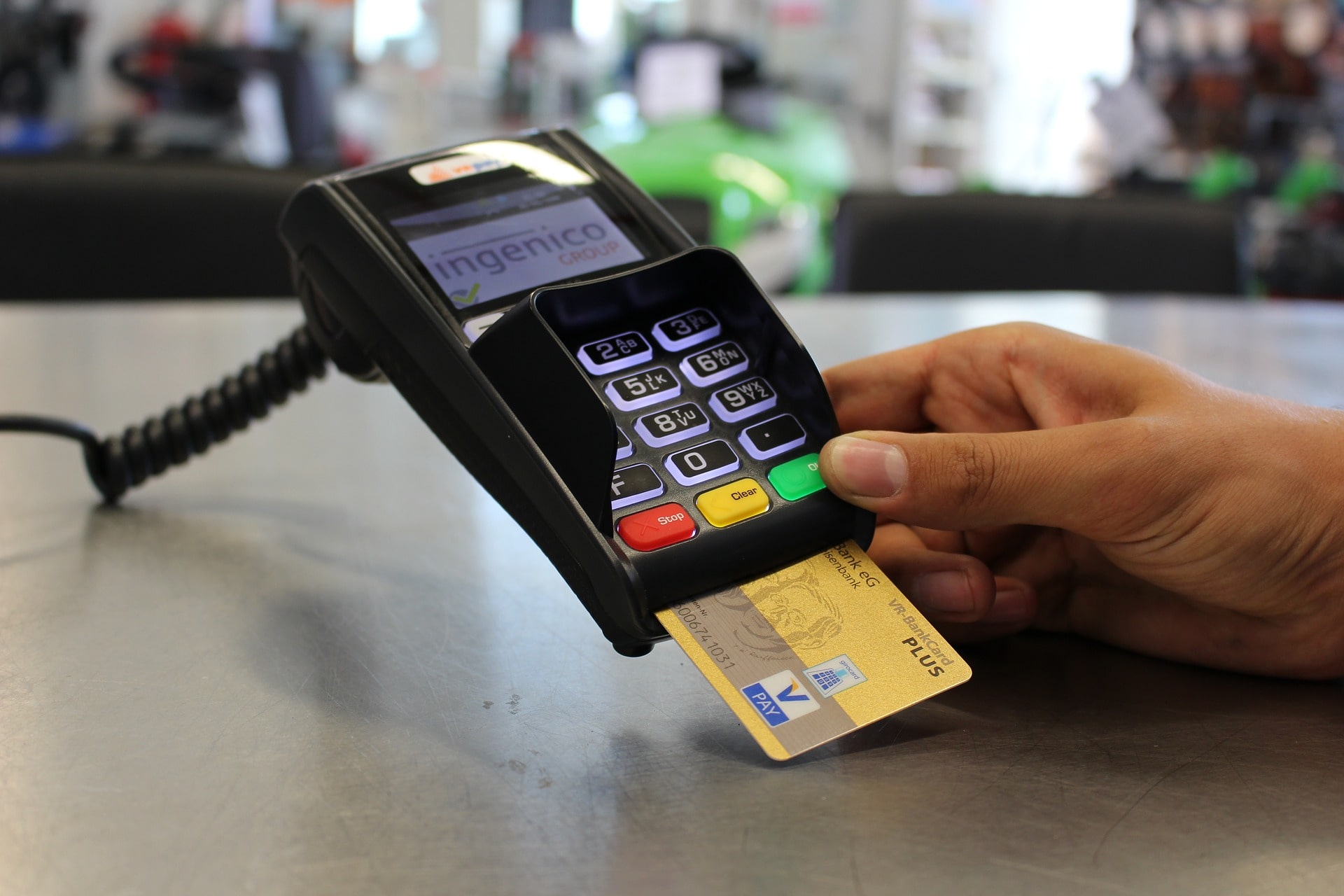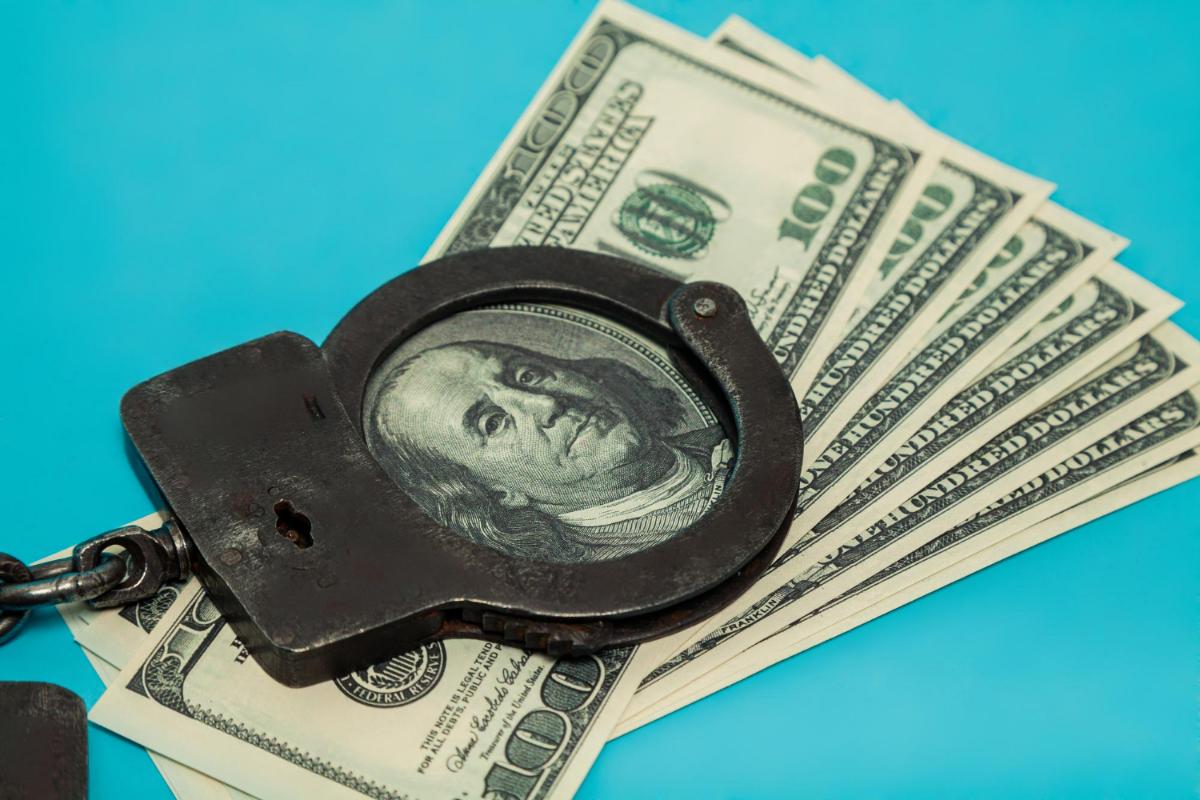

Finance
How Do Bail Bonds Make Money
Modified: February 21, 2024
Discover how bail bonds make money in the finance industry. Learn about the financial mechanisms behind this lucrative business.
(Many of the links in this article redirect to a specific reviewed product. Your purchase of these products through affiliate links helps to generate commission for LiveWell, at no extra cost. Learn more)
Table of Contents
Introduction
In our legal system, the concept of bail allows individuals accused of a crime to secure temporary release from custody while awaiting trial. However, when the amount set for bail is beyond a person’s financial means, they may turn to bail bond services. Bail bonds play a critical role in the criminal justice system by providing a way for defendants to secure their freedom before their trial. But have you ever wondered how bail bondsmen make money?
Before we dive into the intricacies of the bail bond industry, let’s first understand what bail bonds are and how they work. Bail bonds essentially function as a financial guarantee to the court that the defendant will appear for trial. Instead of paying the full bail amount set by the court, which can often be a substantial sum, the defendant can secure a bail bond by paying a percentage of the total bail amount to a bail bondsman. In return, the bail bondsman acts as a surety, promising to pay the full bail amount if the defendant fails to appear in court.
The process of obtaining a bail bond involves several steps. First, the defendant or their loved ones contact a bail bondsman to initiate the process. The bondsman will request information about the defendant, their charges, and the bail amount set by the court. After evaluating the risk associated with the defendant’s release, the bondsman will determine the percentage of the bail amount that needs to be paid as a premium. Once the premium is paid, the bail bondsman will post the bail bond, securing the defendant’s release from custody.
Now that we have a basic understanding of bail bonds, let’s explore how bail bondsmen make money. Bail bonds are a form of business, and like any business, there are various revenue streams and factors that come into play. In the next section, we will dive deeper into the intricacies of the bail bonds industry to uncover how bail bondsmen generate their income.
What Are Bail Bonds?
Bail bonds are financial instruments that allow individuals to secure their temporary release from jail while awaiting trial. When someone is arrested, they may be granted bail, which is a predetermined amount of money set by the court to ensure the defendant’s appearance at future court proceedings. However, not everyone has the financial means to pay the full bail amount upfront.
This is where bail bonds come into play. A bail bond is a contract between the defendant, a bail bondsman, and the court. Instead of paying the full bail amount themselves, the defendant or their loved ones can work with a bail bondsman to secure a bail bond by paying a percentage of the total bail amount (usually around 10%). The bail bondsman acts as a surety, guaranteeing to the court that the defendant will appear for their trial or else the full bail amount will be paid.
By paying the premium – the percentage of the bail amount – the defendant can secure their release from jail. It’s important to note that the premium paid to the bail bondsman is non-refundable and serves as their fee for providing the bail bond service. If the defendant fails to appear in court, the bail bondsman is responsible for paying the full bail amount to the court.
Bail bonds serve as a way for defendants to avoid prolonged pretrial detention and continue with their personal and professional lives while their case is pending. They provide an opportunity for individuals to fight their legal battles from outside of jail, ensuring better access to legal representation and a higher chance of building a strong defense.
It’s crucial to understand that bail bonds are not available in all jurisdictions or for all types of offenses. Some jurisdictions may have different systems in place, such as pretrial release programs or conditional release, which allow defendants to be released without the need for bail bonds. Additionally, certain serious offenses or repeat offenders may not be eligible for bail due to concerns about public safety or flight risk.
Now that we have a clear understanding of what bail bonds are, let’s take a closer look at the process involved in obtaining and utilizing bail bonds in our next section.
The Bail Bonds Process
The bail bonds process is a complex and multi-step procedure that involves several parties and legal requirements. Understanding how the process works can help individuals navigate through the system more effectively when they find themselves in need of a bail bond.
When an individual is arrested and granted bail, they or their loved ones can reach out to a bail bondsman to initiate the process. The bail bondsman will gather information about the defendant, including their name, the charges they are facing, and the bail amount set by the court.
Once the necessary information is collected, the bail bondsman will assess the risk associated with granting the bail bond. Factors such as the defendant’s criminal history, ties to the community, employment status, and financial resources may be taken into consideration. Based on the assessment, the bail bondsman will determine the percentage of the bail amount that needs to be paid as a premium.
Once the premium is agreed upon, the defendant or their loved ones will need to provide the necessary collateral or pay the premium amount in full to the bail bondsman. Collateral can be in the form of cash, property, or other valuable assets that can be used to secure the bail bond. It acts as a form of insurance for the bail bondsman in case the defendant fails to appear in court.
After the premium is paid and the collateral is secured, the bail bondsman will initiate the paperwork required to post the bail bond with the court. This involves completing a bail bond application and signing a contract that outlines the terms and conditions of the bail bond, including the defendant’s responsibility to appear in court as scheduled.
Once the paperwork is in order, the bail bondsman will post the bail bond with the court on behalf of the defendant. This allows the defendant to be released from custody, with the understanding that they will appear in court for all scheduled hearings and trial dates.
If the defendant fails to appear in court, the bail bondsman will be responsible for paying the full bail amount to the court. In such cases, the collateral provided by the defendant or their loved ones may be seized as compensation for the bail bondsman’s financial loss.
It’s important to note that the bail bondsman’s responsibility typically ends after the defendant’s case is resolved in court. If the defendant is found guilty and sentenced, they are required to fulfill their legal obligations, such as serving the imposed jail time or paying fines and restitution.
Understanding the intricacies of the bail bonds process is crucial for individuals who find themselves in need of a bail bond. By working with a reputable bail bondsman and following the necessary procedures closely, defendants can secure their temporary release and focus on building a strong defense for their case.
How Do Bail Bonds Work?
When a person is arrested and granted bail, they have the option to secure their release by either paying the full bail amount set by the court or obtaining a bail bond through a bail bondsman. Understanding how bail bonds work can help individuals make informed decisions when it comes to their legal situations.
The process begins when an individual or their loved ones contact a bail bondsman. The bail bondsman will assess the case, including the charges, the defendant’s criminal history, and the bail amount set by the court. Based on this assessment, the bail bondsman will determine the percentage of the total bail amount required as a premium.
For example, if the bail amount is set at $10,000 and the bail bondsman charges a 10% premium, the defendant would need to pay $1,000 as the premium to secure the bail bond. This premium is non-refundable and serves as the bail bondsman’s fee for their services.
Once the premium is paid, the bail bondsman will post the bail bond with the court. This means that the bail bondsman is providing a financial guarantee to the court that the defendant will appear for all scheduled court appearances.
By posting the bail bond, the bail bondsman assumes the responsibility of ensuring the defendant’s compliance with the court system. In the event that the defendant fails to appear in court, the bail bondsman may face financial consequences. They will be required to pay the full bail amount to the court.
To mitigate this risk, bail bondsmen often require collateral from the defendant or their loved ones. Collateral can be in the form of cash, property, or other valuable assets. If the defendant fails to appear in court and the bail bondsman is responsible for paying the full bail amount, they may seize the collateral as compensation.
It’s important to note that if the defendant fully complies with the court system, attends all scheduled court dates, and the case is resolved, the bail bond is considered satisfied. At this point, any collateral provided will be returned to the defendant or their loved ones, and the contract with the bail bondsman will be terminated.
Overall, bail bonds provide an option for defendants to secure their temporary release from custody without having to pay the full bail amount upfront. They allow individuals to navigate the legal process from outside of jail, giving them the opportunity to seek legal counsel and prepare their defense effectively.
Understanding how bail bonds work can help defendants and their families make informed decisions when it comes to securing their release and handling their legal matters. Working with a reputable bail bondsman who can walk them through the process is crucial to ensuring a smooth and successful experience.
How Do Bail Bondsmen Make Money?
Bail bondsmen provide a critical service in the criminal justice system, helping individuals secure their release from jail while awaiting trial. But how do bail bondsmen make money? Let’s explore the various ways they generate income in the bail bond industry.
1. Premiums: Bail bondsmen charge a non-refundable fee known as the premium. Typically, this fee is a percentage (usually around 10%) of the total bail amount set by the court. For example, if the bail is set at $10,000, the bail bondsman may charge a $1,000 premium. This premium is the bail bondsman’s profit and compensation for taking on the risk of ensuring the defendant’s appearance in court.
2. Collateral: Bail bondsmen often request collateral from defendants or their loved ones to secure the bail bond. Collateral can include cash, property, or other valuable assets. If the defendant fails to appear in court, the bail bondsman may seize the collateral to cover their financial loss. However, collateral is returned once the case is resolved and the defendant fulfills their legal obligations.
3. Bail bond forfeitures: If the defendant fails to appear in court, the bail bondsman is responsible for paying the full bail amount to the court. This can result in a loss for the bondsman. However, they can attempt to recover this loss through various means, such as locating the defendant or working with a bounty hunter to apprehend them. If successful, the bail bondsman can recoup their payment to the court and potentially charge additional fees.
4. Additional fees and services: Bail bondsmen may charge additional fees for services related to the bail bond process. For example, they may charge fees for administrative tasks, such as filing paperwork or completing the necessary documentation. Additionally, some bail bondsmen may offer services beyond providing bail bonds, such as court appearance reminders or transportation services, which can generate additional income.
It’s essential to note that bail bondsmen operate within strict legal regulations and guidelines set by individual states. These regulations dictate the maximum allowable fees and the permissible practices for bail bond agents.
Factors such as the defendant’s flight risk, the complexity of the case, and the local market competition can also influence a bail bondsman’s income. Bail bondsmen must carefully assess these factors to determine the risk associated with providing bail bonds and set their premiums accordingly.
In summary, bail bondsmen make money through the collection of premiums, the retention of collateral, the recovery of forfeited bail, and potential additional fees for services. By managing risks and providing a valuable service within the legal framework, bail bondsmen can generate income while helping individuals secure their release from jail pending trial.
Factors Affecting Bail Bond Costs
The cost of a bail bond, known as the premium, can vary depending on several factors. Understanding the factors that affect bail bond costs can help individuals navigate the bail bond process more effectively. Here are some key factors to consider:
1. Bail Amount: The primary factor influencing the cost of a bail bond is the total bail amount set by the court. Bail bonds typically require payment of a percentage of the bail amount, often around 10%. For example, if the bail is set at $10,000, the premium would be $1,000. Higher bail amounts will result in higher premium costs.
2. Risk Assessment: Bail bondsmen evaluate the risk associated with granting a bail bond to a defendant. Factors that may impact this assessment include the defendant’s criminal history, ties to the community, employment status, and the nature of the charges. The higher the perceived risk, the higher the premium may be.
3. Collateral: Bail bondsmen often require collateral as a form of security. Collateral can be in the form of cash, property, or other valuable assets. The value and type of collateral provided can impact the premium cost. Higher-value collateral may result in lower premium costs, as it reduces the bail bondsman’s risk.
4. Jurisdiction: Bail bond regulations and market conditions can vary by jurisdiction. Different states or areas may have maximum allowable premium rates set by law. Additionally, market competition can impact pricing. In highly competitive areas, bail bondsmen may offer lower premiums to attract clients.
5. Additional Fees: Bail bondsmen may charge additional fees for their services. These fees can include administrative costs, document filing fees, or fees for additional services provided, such as court appearance reminders or transportation. It’s important to review these potential fees and understand the total cost associated with the bail bond.
6. Payment Options: Bail bondsmen may offer payment plans to make the premium more manageable for clients. These payment plans can spread out the cost over a period of time, but keep in mind that interest or additional fees may be associated with such arrangements.
It’s important to note that bail bond costs can be non-refundable, even if the charges are dropped or the defendant is acquitted. The premium paid to the bail bondsman is for their services in securing the bail bond and managing the associated risks.
When seeking a bail bond, it’s essential to work with a reputable and licensed bail bondsman. They will explain the costs involved, provide clear terms and conditions, and ensure compliance with local regulations.
By considering these factors and working closely with a trusted bail bondsman, individuals can better understand and manage the costs associated with obtaining a bail bond.
Additional Fees and Expenses
When obtaining a bail bond, it’s important to be aware of potential additional fees and expenses that may be associated with the process. While the premium is the primary cost of a bail bond, there are other factors to consider that can affect the overall financial obligations. Here are some common additional fees and expenses:
1. Bail Bond Application Fee: Some bail bond companies charge an application fee for processing the bail bond application. This fee covers the administrative costs associated with initiating the bail bond process. It’s important to inquire about any application fees before entering into an agreement with a bail bondsman.
2. Bail Bond Service Fee: In addition to the premium, bail bondsmen may charge a service fee for their assistance in securing the bail bond. This fee covers the bondsmen’s expertise, time, and resources invested in the bail bond process. It’s essential to clarify the service fee with the bail bondsman to understand the total cost of obtaining the bail bond.
3. Collateral Evaluation Fee: If collateral is required as security for the bail bond, the bail bondsman may charge a collateral evaluation fee. This fee covers the assessment of the value and authenticity of the collateral provided. It’s important to understand any fees associated with collateral evaluation and potential charges for collateral release once the case is resolved.
4. Bail Enforcement Fee: In situations where the defendant fails to appear in court and the bail bondsman needs to employ a bail enforcement agent, commonly known as a bounty hunter, there may be a bail enforcement fee. This fee covers the expenses involved in locating and apprehending the defendant. It’s crucial to review the bail bond contract to understand how bail enforcement fees are managed if such a situation arises.
5. Payment Plan Fees: Some bail bondsmen offer payment plans to help individuals manage the cost of the premium over time. In these cases, there may be additional fees or interest associated with the payment plan arrangement. It’s important to discuss and understand all aspects of the payment plan, including any additional costs involved, before committing to it.
6. Court-Imposed Fines and Costs: While not directly tied to the bail bondsmen’s fees, defendants should be aware of any fines or court costs associated with their case. These expenses are separate from the bail bond and are determined by the court if the defendant is convicted or pleads guilty. It’s important to budget for potential fines and court costs in addition to the fees associated with the bail bond.
It’s essential to carefully review the terms and conditions of the bail bond agreement before proceeding. Ask the bail bondsman for a detailed breakdown of all fees and expenses to ensure full transparency and avoid any surprises. Working with a reputable and trustworthy bail bondsman will help ensure a clear understanding of all financial obligations.
Remember, additional fees and expenses can vary depending on the bail bond company and jurisdiction. Asking questions and seeking clarification on any potential costs will help individuals make informed decisions when obtaining a bail bond.
Risks and Considerations
While bail bonds can provide temporary release from jail for individuals awaiting trial, there are important risks and considerations to keep in mind. It’s crucial to understand these factors before deciding to pursue a bail bond. Here are some key risks and considerations:
1. Financial Responsibility: When obtaining a bail bond, the defendant or their loved ones are taking on a financial responsibility. If the defendant fails to appear in court, the bail bondsman may be required to pay the full bail amount to the court. In such cases, the collateral provided may be seized, and the defendant or their loved ones may face financial repercussions.
2. Non-Refundable Premium: The premium paid to the bail bondsman for their services is typically non-refundable, regardless of the case outcome. Even if the charges are dropped or the defendant is found not guilty, the premium is retained by the bail bondsman as their fee for securing the bail bond.
3. Collateral Requirement: Bail bondsmen often require collateral as security for the bail bond. This collateral can be in the form of cash, property, or other valuable assets. If the defendant fails to appear in court, the collateral may be seized by the bail bondsman to cover their financial loss. It’s crucial to understand the potential risks associated with providing collateral.
4. Court-Imposed Conditions: When released on bail, defendants are typically required to comply with certain conditions set by the court. This may include attending all court appearances, adhering to travel restrictions, undergoing drug testing, or following other specific instructions. Failure to comply with these conditions can result in the revocation of the bail and potential re-arrest.
5. Impact on Personal and Professional Life: While on bail, defendants may face restrictions that impact their personal and professional lives. Travel limitations, curfews, and ongoing legal obligations can disrupt daily routines and relationships. It’s important to consider these potential disruptions and discuss them with loved ones before pursuing a bail bond.
6. Legal Consequences: The outcome of the case can have legal consequences for the defendant. If found guilty, they may face fines, probation, or even incarceration. It’s important to weigh the potential consequences of the case against the benefits of securing temporary release through a bail bond.
7. Limited Availability: Bail bonds may not be available for all types of offenses or in all jurisdictions. Some jurisdictions have different systems in place, such as pretrial release programs or conditional release, which offer alternatives to bail bonds. Additionally, certain serious offenses or repeat offenders may not be eligible for bail. It’s essential to consult with legal professionals to understand the options available in the specific case.
Considering these risks and factors, individuals should evaluate their specific circumstances and consult with legal professionals to make informed decisions about pursuing a bail bond. Working with a reputable bail bondsman who can provide clear guidance and ensure compliance with legal requirements is vital throughout the process.
Ultimately, understanding the risks and considerations associated with bail bonds allows individuals to make informed choices while navigating the judicial system.
Conclusion
Bail bonds play a crucial role in the criminal justice system, providing individuals with an opportunity to secure their temporary release from jail while awaiting trial. Understanding how bail bonds work, the factors that impact their costs, and the potential risks involved is essential when considering this option.
When seeking a bail bond, it’s important to work with a reputable and licensed bail bondsman who can guide you through the process. They can explain the costs and terms associated with the bail bond, ensuring transparency and clarity throughout the journey.
Factors such as the bail amount, risk assessment, collateral requirement, and jurisdiction-specific regulations can influence the cost of a bail bond. Additional fees and expenses, such as application fees, service fees, and potential collateral evaluation fees, should also be taken into account.
Risks and considerations, including financial responsibility, non-refundable premiums, collateral requirements, court-imposed conditions, and potential impact on personal and professional life, should be carefully evaluated. It’s crucial to weigh the potential benefits of temporary release against the legal consequences and potential disruptions caused by bail bond obligations.
By making informed decisions and seeking legal advice, individuals can navigate the bail bond process more effectively. Remember, working closely with a trusted bail bondsman and complying with court-imposed conditions is essential to ensure a successful experience.
While bail bonds can provide temporary freedom, it’s important to remember that they are just one aspect of the legal journey. The ultimate goal should be to address the underlying legal issues and work towards a fair and just resolution within the bounds of the law.
In conclusion, understanding the ins and outs of the bail bond process allows individuals to make informed decisions and effectively navigate the complexities of the criminal justice system. By considering the factors discussed in this article, individuals can approach the bail bond process with confidence, ensuring the best possible outcome for their legal situation.
